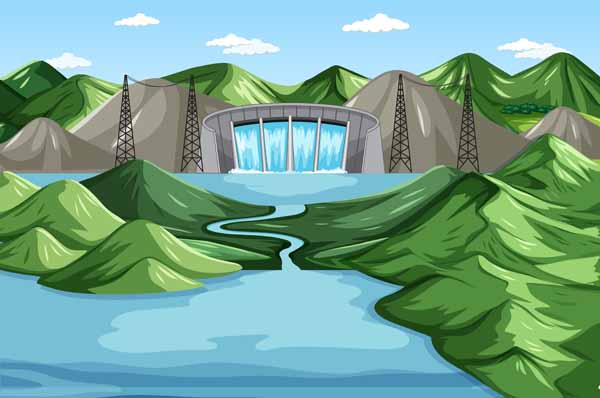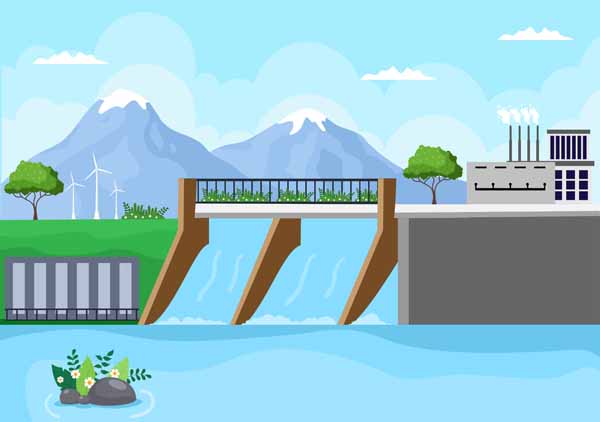Natural resources are necessary for human survival and development. They encompass a variety of elements present in the environment that we utilize for food, energy, and industrial purposes. The presence and availability of these resources significantly impact economic growth, sustainability, and quality of life. Understanding what are natural resources, their various types, importance, and their availability in specific regions like natural resources in India is crucial.
Understanding what are natural resources
Natural resources are materials or substances that are naturally available in the environment and can be utilised for economic growth. They include everything from the air we breathe to the minerals deep underground. These resources are vital for our daily lives and the industrial processes that support our society. These resources are extracted from earth and various ecosystems like air, water, land, minerals, forests and wildlife. Most importantly, efficient and sustainable management of natural resources is important to ensure its availability for future generations.
Types of natural resources
There are primarily two types of natural resources: renewable and non-renewable
Renewable resources
Renewable resources are those that can be replenished naturally over time. They include:
Solar Energy: Solar energy is harnessed from the sun and used for electricity and heating.

Wind Energy: Wind energy is generated by wind turbines, converting kinetic energy into electrical power.

Water Resources: Water resources are Utilised for drinking, agriculture, and hydroelectric power.

Biomass: Organic material used for energy production, such as wood and agricultural waste.
Non-renewable resources
On the other hand, Non-renewable resources are finite and will eventually be depleted. They include:
Fossil Fuels: Coal, oil, and natural gas, which are used for energy and fuel.
Minerals: Metals and other elements extracted for manufacturing and construction.
Nuclear Energy: Nuclear energy is derived from uranium, a mineral with limited availability.
Difference between renewable and non-renewable resources
|
Renewable |
Non-renewable |
|
Restore naturally within a short period |
Take millions of years to restore or cannot be restored |
|
Infinite and can be used persistently if managed properly |
Finite and will eventually be exhausted |
|
Examples include solar, wind, hydro, geothermal, and biomass energy |
Examples include fossil fuels (coal, oil, natural gas) and minerals |
|
Cleaner and have a reduced environmental impact |
Can often cause pollution and contribute to climate change |
|
Reliant on geographical location and weather conditions |
Can be transported and preserved for use anywhere |
|
Abundant and widely available in nature |
Scarcity increases as resources are depleted |
Importance of Natural Resources
The importance of natural resources cannot be overstated. They are foundational to our existence and development in several ways:
Economic Development: Many economies, especially those rich in minerals and fossil fuels, thrive on extracting and exporting these resources. They contribute to GDP and create employment opportunities.
Energy Production: Natural resources are critical for generating energy, which powers industries, homes, and transportation.
Sustaining Life: Water, soil, and air are essential for the survival of all living organisms. They support food production, health, and ecosystems.
Technological Advancement: Minerals and metals are necessary for developing technology, from smartphones to medical equipment. Advancements in technology improve the quality of life and drive innovation.
Natural Resources in India
India is a country rich in natural resources and covers a multitude of biotic and abiotic resources. The diverse geography and climate provide a wide range of resources crucial for a nation’s economy and development. Major resources include:
Coal: India has the world’s fourth-largest coal reserves. It is a major source of energy and industrial raw material.

Iron Ore: Abundant iron ore reserves make India one of the leading producers of steel.
Bauxite: Used for aluminium production, India has substantial bauxite reserves.
Oil and Natural Gas: Significant reserves contribute to the country’s energy needs and reduce dependency on imports.
Water Resources: Major rivers like the Ganges and Brahmaputra provide water for agriculture and hydroelectric power.

Benefits of Natural Resources
The benefits of natural resources are manifold:
Economic Stability: Countries rich in natural resources often enjoy stable economies due to the revenue generated from resource extraction and exports.
Energy Security: Access to domestic energy resources reduces reliance on foreign energy imports, enhancing national security.
Industrial Growth: Raw materials from natural resources are crucial for industrial processes, which in turn produce goods and services.
Environmental Benefits: Renewable resources offer sustainable energy solutions and reduce environmental degradation.
Understanding the usage of natural resources, the different types of natural resources, and their importance is fundamental for sustainable development. Natural resources in India play a pivotal role in its economy, providing numerous benefits such as energy security, job creation, and industrial growth.
At Center Point School, we recognise the significance of educating students about the sustainable use and management of natural resources to ensure a prosperous future for generations to come. By fostering awareness and responsibility, we can harness these resources to their full potential while preserving them for the future. Natural resources are the cornerstone of civilisation, and their prudent use is key to achieving sustainable development and economic prosperity.





